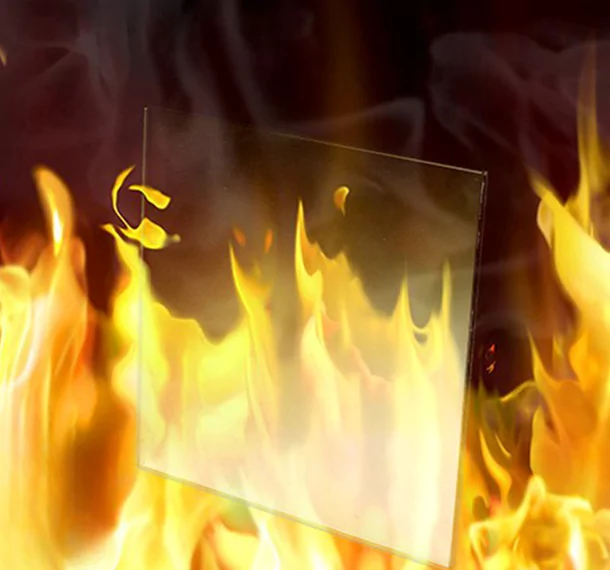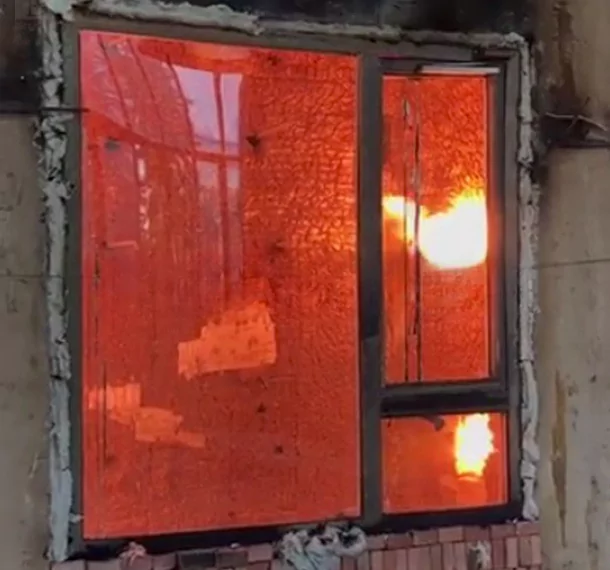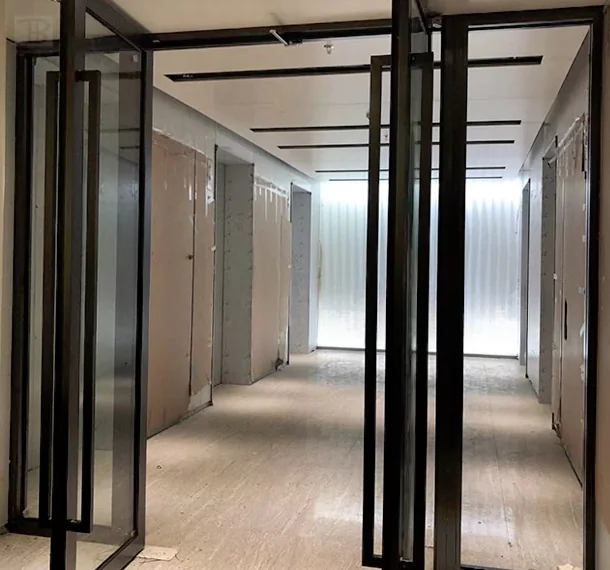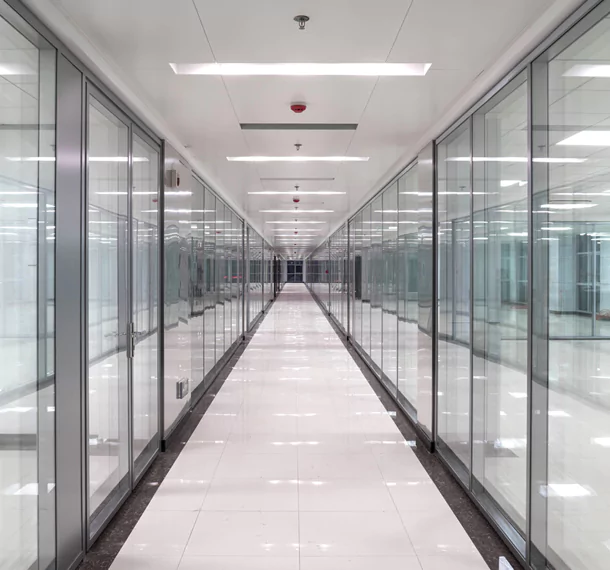
SINGLE LAYER FIRE-RATED GLASS
Learn more
DOUBLE LAYERS FIRE-RATED GLASS
Learn more
FIREPROOF GLAZING WINDOWS AND DOORS
Learn more




Fire rated glass is an essential component in modern building design, offering both safety and aesthetic appeal. as fire safety regulations become increasingly stringent, the demand for effective fire protection solutions has risen significantly. this blog will explore the various types of fire rated glass available in the market, their benefits, and their diverse applications across different sectors in Estonia.
Fire rated glass can be categorized into several types based on its composition and performance characteristics. the most common types include:
1. wired glass: this type features a wire mesh embedded within the glass to provide structural integrity during a fire. while it is cost-effective and readily available, wired glass often lacks clarity and aesthetic appeal.
2. ceramic glass: known for its high resistance to thermal shock, ceramic glass can withstand extreme temperatures without breaking. it is typically used in areas requiring high visibility while still providing excellent fire protection in Estonia.
3. laminated glass: this type consists of multiple layers of glass bonded together with an interlayer that enhances its strength and thermal insulation properties. laminated fire rated glass offers improved sound insulation along with fire resistance.
4. intumescent glass: when exposed to heat or flames, intumescent materials expand significantly to form a protective barrier against smoke and flames. this type of glass is ideal for applications requiring longer duration fire ratings.
5. polycarbonate panels: while not traditional glass, polycarbonate panels are often used as alternatives due to their lightweight nature and impact resistance combined with good thermal performance during fires.
The incorporation of fire rated glass into building designs presents numerous advantages:
- safety compliance: utilizing certified fire rated products ensures compliance with local building codes and regulations aimed at protecting occupants from potential hazards associated with fires.
- aesthetic appeal: unlike traditional barriers such as concrete walls or metal doors that obstruct visibility, modern fire rated glasses maintain transparency while providing crucial safety measures without compromising design aesthetics.
- natural light penetration: fire rated glazing allows natural light to flow into spaces while maintaining necessary safety standards—reducing reliance on artificial lighting which can contribute positively towards energy efficiency goals within buildings.
- versatility in design: available in various thicknesses and finishes enables architects to integrate these materials seamlessly into diverse architectural styles—from contemporary office buildings to historic renovations—without sacrificing functionality or beauty.
Fire rated glass finds application across various industries including:
1. commercial buildings: office spaces frequently utilize large expanses of glazing for open-concept designs; incorporating fire-rated options protects against potential threats while enhancing overall aesthetics throughout shared environments like lobbies or conference rooms.
2. healthcare facilities: in hospitals where patient safety is paramount yet visibility remains critical—for instance between nurses’ stations—fire-rated windows serve dual purposes by allowing observation without compromising on health standards set forth by regulatory bodies such as nfpa (national fire protection association).
3. educational institutions: schools often incorporate this technology within classrooms adjacent hallways ensuring safe egress routes remain unobstructed during emergencies whilst also fostering collaborative learning environments through open sightlines between spaces.
4. retail spaces & malls: retailers benefit from using these systems not only because they comply with legal requirements but also help create engaging shopping experiences through well-lit storefronts protected against potential hazards like arson attempts or accidental fires caused by faulty equipment displays among others risks present in public venues frequented by large crowds daily!
5 . residential properties: homeowners increasingly opt for innovative solutions that promote both style & substance – utilizing decorative yet functional elements such as sliding doors leading onto patios fitted out with specialized tempered panels designed specifically meet stringent residential codes ensuring peace-of-mind when entertaining guests outdoors even amidst unforeseen incidents occurring unexpectedly nearby!
In conclusion , the roles played by different types , benefits gained through implementation alongside varied applications serves vital purpose informing stakeholders involved decision-making processes surrounding selection installation thereof . as we continue evolving industry practices towards prioritizing life-safety measures it becomes imperative embrace advancements technologies available including those pertaining specifically field regarding use cases applicable today tomorrow alike!
Fill the form below to get in touch with us.
Fireproof glass has proven itself essential in situations requiring maximum protection, providing superior fire resistance against flames and heat.
Fire-rated glass is purposefully engineered to withstand intense temperatures for an extended period, thanks to special materials that effectively stop fire from spreading and limit heat transfer.
Fire-rated glass protection is essential in many settings, from commercial buildings and hospitals to schools and hospitals. Furthermore, this material helps preserve structural integrity during a fire - contributing to overall occupant safety.
Fire-Resistant Glass: Protecting Lives and Assets
Fire resistant glass provides a crucial line of defense in preserving lives and property from fire's devastating effects. Specialized panels with fireproof properties absorb intense heat for prolonged periods, making these vital safety elements invaluable components in many applications such as building facades, windows and doors.
Installing fire resistant glass in critical areas such as stairwells and escape routes can dramatically enhance safety during emergency situations.
Fire resistant glass' inherent strength further enables it to withstand impact, providing an extra level of security against intrusion and vandalism.
Modern architectural designs often prioritize sleek aesthetics and expansive glazing to maximize natural light and create an open feeling, yet these large glass facades can pose a substantial fire hazard, necessitating innovative solutions to ensure both style and safety. Fire protection glass has emerged as a significant solution, manufactured using special materials and coatings that act as barriers against fire spread while providing essential protection to both occupants and property.
Fireproof glass offers significant advantages during times of firefighting efforts and evacuation efforts, thanks to its ability to withstand heat transfer for an extended period and provide enough time for evacuation and firefighting efforts.
Furthermore, these innovative glazing solutions come in different configurations to seamlessly incorporate with modern architectural concepts without diminishing aesthetic appeal.
Integrating fire protection glass into building designs isn't simply about meeting compliance regulations; it also serves as an expression of your dedication to occupant safety and responsible design practices. With technological developments driving its evolution, fireproof glass promises even more innovative solutions to meet the ever-evolving requirements of modern architecture.
Flame-Resistant Glass: Engineered for Uncompromising Fire Safety When it comes to construction and design, fire safety stands as a top priority. Facilities must be fitted out with materials capable of withstanding the threat of flames in order to safeguard lives and property - Anti-Fire Glass provides this critical barrier and allows time for evacuation efforts and firefighting efforts by slowing its spread. Engineered using advanced formulations, it has proven invaluable as a solution.
Anti-Fire Glass typically employs advanced technologies to enhance its fire-retardant properties, such as inclusions that direct heat away from its target, thus protecting it from shattering under intense temperatures.
Anti-Fire Glass plays an essential role in providing protected environments for both residential and commercial uses, from windows and doors to skylights and partitions - offering a reliable and powerful solution to mitigate fire risks.
Understanding Fire-Resistant Glass: Types, Ratings & Applications
Fireproof glass (fire-resistant glass) plays an invaluable role in protecting structures and their inhabitants against fire's dangers. Engineered to withstand high temperatures for extended periods, fireproof glass provides invaluable time for evacuation efforts and firefighting efforts to take place successfully.
There are various types of fireproof glass, each offering unique properties. Common varieties are wired glass, tempered glass, laminated glass and ceramic fiber glass - each type is rated according to its ability to withstand heat over a specific amount of time intervals; ratings are provided by organizations such as Underwriters Laboratories or European Norm.
Fireproof glass has many different applications in commercial structures, from building facades and windows to doors, screens, and skylights. Fire-resistant glass not only prevents the spread of flames but also acts as an effective barrier against smoke and harmful gases that could present themselves during an incident.
Fire-resistant glass has several key attributes, including its ability to withstand extreme temperatures, resist shattering, and remain structurally sound during a fire.
Selection of fire-resistant glass depends on a number of considerations, including building use, fire resistance requirements and aesthetic preferences. sticla Fireproofing contributes significantly to fire safety by acting as a critical barrier against flames, smoke and heat transfer.
Fire-Protected Windows: An Overview of Fire Codes
Construction and building regulations place fire safety as a top priority, with structural integrity as an absolute requirement in protecting lives and property from potential fire hazards. One effective measure used to achieve this objective is fireproof glazing - effectively restricting fire from spreading through glazed openings such as windows and doors by restricting flame and smoke flow through these spaces. Most construction projects adhere to stringent fire safety standards that govern materials, design, testing requirements to ensure fire-proof glazing fulfills its purpose as intended by fulfilling stringent materials, design requirements governing materials, design specifications as well as testing requirements so it meets its intended function successfully.
Understanding fire safety standards is of utmost importance for architects, engineers, contractors, and building owners. A comprehensive guide reveals all of the complexities surrounding fireproof glazing's selection, installation, and maintenance - and provides key regulations governing them all.
Importance of Fire Protection Glass in Building Codes
Fireproof glass plays a critical role in meeting building code standards by helping to prevent fires from spreading quickly through structures. Constructed using material designed to withstand extreme temperatures while remaining nonfragmentary during an incident, these glazing materials help isolate flames for easier evacuation efforts while providing more time for escape plans. Integrating fireproofing into design plans ensures occupant safety and reduces property damages.
Building codes impose stringent regulations regarding the use of fireproof glass, to ensure structures meet stringent safety standards. These codes often specify minimum fire resistance ratings, installation methods, and testing protocols for fire protection glass products - adhering to them helps architects, engineers and builders design more resilient structures that can withstand potential risks associated with fire.
Fire protection glass is an indispensable component in creating fireproof structures. With its ability to limit fire and smoke spread, it forms part of building codes ensuring the well-being of both occupants and property.
Fire Resistant Glass: Strengthening Building Safety
Modern construction places great importance on ensuring structural architectural safety of the buildings we construct, which includes fire protection. One essential yet often-overlooked aspect is fireproof glass's role as an essential fire retardant barrier; with inherent properties to inhibit flame spread and enhance overall robust building resilience. Fire Retardant Glass Is Key For Strengthening It (or rather: Reinforcing It).
Fire-retardant glass achieves its protective effect through an unconventional combination of chemicals and manufacturing processes, which act to slow combustion by decreasing heat transfer and impeding flame propagation extension movement. As a result, its protective barrier effect allows residents to evacuate safely while also giving firefighters ample time to respond rapidly.
Fire-retardant glass plays an integral part in maintaining building structural integrity during a fire event, withstanding intense heat while remaining strong to help avoid catastrophic collapse, failure and destruction while shielding valuable assets within.
Therefore, incorporating fireproof glass into building designs is an investment in safety and resilience, providing tangible protection from the devastating consequences of fire that safeguard lives, property and communities alike.
Advanced Fire Resistant Glass Technology
The building industry is continually searching for better materials to enhance safety and performance, and one such innovation is advanced fire resistant glass technology, which has proven an effective means of shielding buildings from fire's devastating effects. Fireproof glass utilizes sophisticated composites to form an impenetrable barrier against heat and flames - protecting buildings as well as their inhabitants against potential danger.
One of the greatest advantages of advanced fire resistant glass is its outstanding heat resistance. These specially engineered glasses have been created to withstand extended high temperature exposure without shattering or losing structural integrity, making them suitable for use in critical areas such as windows, doors, partitions and emergency shelters.
Modern fire resistant glass products also incorporate smart technologies to increase its functionality, such as embedded sensors which detect flame variations and trigger safety protocols to mitigate their impact. This proactive approach allows for timely response times that can help minimize fire risks significantly.
These glasses also provide great optical clarity, meaning they won't obscure views or block natural light penetration - making them highly appealing to architects and designers looking to create secure yet visually pleasing spaces.
Picking the Ideal Fire-Rated Glass for Your Needs
When it comes to fire safety, selecting the appropriate glass is of utmost importance. Fireproofed glasses provide vital protection from flames and heat generated during an inferno; but with so many choices out there it can be challenging figuring out which option best meets your specific requirements based on factors like thickness, fire resistance rating, intended use etc.
Before choosing any glass thickness for fire resistance purposes, first determine its level. This depends on both building purpose and local codes; next consider its thickness; thicker glasses tend to provide greater fire protection.
Last, assess how you intend to use the glass. For instance, fire-rated doors require different considerations than windows.
Distinguishing Fire-Proof from Fire-Resistant Glass
To effectively defend structures against fire, selecting the appropriate type of glass is paramount. While two terms often used interchangeably are "fireproof glass" and "fire-resistant glass," they actually denote different properties: fireproof is designed to withstand high heat and flames completely while fire-resistant glass helps delay or restrict the spread of fire over a predetermined time period, providing essential time for evacuation or mitigating structural damage.
Understanding these distinctions is critical when selecting glass for particular uses. Fireproof glass may be suitable for areas like firewalls or doors where fire containment is key; while fire-resistant glass could provide more practical solutions in windows or partitions where delaying fire's spread may suffice.
In the realm of fire safety and design, fire-rated glass Estonia stands as a crucial component. Let's delve into three successful projects where this innovative material was utilized to create stunning glass doors or glass walls, ensuring both safety and aesthetics seamlessly blend together:
1. Project Name: The Zenith Tower_
Effects: Incorporating fire-rated glass Estonia doors in the lobby area not only enhanced the modern aesthetic but also provided a safe and secure environment for occupants. The natural light transmission through these doors created an inviting ambiance while meeting stringent fire safety regulations in Estonia.
2. Project Name: Innovate Tech Campus_
Effects: Utilizing fire-rated glass walls in meeting rooms added a touch of sophistication to the workspace. The transparency of the glass facilitated collaboration while ensuring compartmentation in case of a fire emergency, striking a perfect balance between style and safety.
3. Project Name: Luxury Boutique Hotel Renovation_
Effects: By integrating fire-rated glass throughout the design, including elegant glass partitions and doors, the project achieved a seamless flow between spaces without compromising on safety standards. The visually striking presence of these elements elevated the overall guest experience while prioritizing fire protection measures.
These projects exemplify how fire-rated glass can not only meet stringent safety requirements but also elevate architectural designs with its versatility and aesthetic appeal.
Our Location in Estonia:Pikk 71/Tolli 2,Estonia,Estonia
KACA KEBAKARAN Kuningan
FIRE-RATED GLASS Cebu
VIDRIO RESISTENTE AL FUEGO Jinotega
VIDRIO RESISTENTE AL FUEGO Concordia
VIDRIO RESISTENTE AL FUEGO Santa Ana
FIRE-RATED GLASS Mizoram
زجاج مقاوم للحريق الدوما
ОГНЕЗАЩИТНОЕ СТЕКЛО Ченстохова